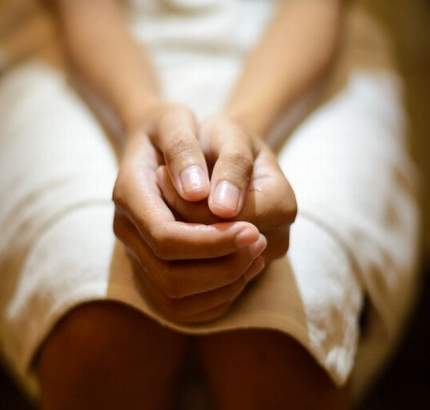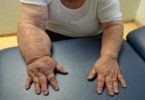
What's in this article?
What is Vulvodynia?
Vulvodynia, simply put, is chronic vulvar pain without an identifiable cause. The location, constancy and severity of the pain vary among sufferers. Some women experience pain in only one area of the vulva, while others experience pain in multiple areas. The most commonly reported symptom is burning, but women’s descriptions of the pain vary. One woman reported her pain felt like “acid being poured on my skin,” while another described it as “constant knife-like pain.”
If you have vulvodynia, don’t let the absence of visible signs or embarrassment about discussing the symptoms keep you from seeking help. Treatment options are available to lessen your pain and discomfort.
Symptoms of Vulvodynia
The main vulvodynia symptom is pain in your genital area, which can be characterized by:
- Burning
- Soreness
- Stinging
- Rawness
- Painful intercourse (dyspareunia)
- Throbbing
- Itching
The pain you experience may be constant or occasional and can last for months or even years, but it can vanish as suddenly as it started. You may feel the pain in your entire vulvar area (generalized), or it may be localized to a certain area, such as the opening of your vagina (vestibule).
A similar condition, vestibulodynia, may cause pain only when pressure is applied to the area surrounding the entrance to your vagina.
Vulvar tissue may look minimally inflamed or swollen. More often, your vulva appears normal.
Types of Vulvodynia
Vulvodynia affects the vulva, the external female genital organs. This includes the labia, clitoris, and vaginal opening.
There are two main subtypes of vulvodynia:
- Generalized vulvodynia is pain in different areas of the vulva at different times. Vulvar pain may be constant or occur every once in a while. Touch or pressure may or may not prompt it. But this may make the pain worse.
- Vulvar vestibulitis syndrome is pain in the vestibule. This is the entrance to the vagina. Often a burning sensation, this type of vulvar pain comes on only after touch or pressure, such as during intercourse.
What are the causes of Vulvodynia?
The exact cause of vulvodynia isn’t known.
Some factors that may be involved include frequent yeast infections or sexually transmitted infections, chemical irritation of the external genitals (from soaps, feminine hygiene products or detergents in clothing), rashes on the genital area, previous laser treatments or surgery on the external genitals, nerve irritation, injury or muscle spasms in the pelvic area, diabetes and precancerous or cancerous conditions on the cervix.
Vulvodynia can be confused with other vulvo-vaginal problems such as chronic tension or spasm of the muscles of the vulvar area called vaginismus. This is particularly difficult to distinguish as muscular spasms can cause pain and pain can cause muscular spasms.
Dianosis of Vulvodynia
After taking a thorough medical history and asking questions about your symptoms, your provider should carefully examine the vulva, vagina and vaginal secretions to rule out an active infection or skin disorder. Routine cultures for yeast and bacterial infections should be performed. Your provider may also recommend that you have blood drawn to assess levels of estrogen, progesterone and testosterone. He/she will likely perform a cotton-swab test (pictured on the right). During the test, gentle pressure is applied to various vulvar sites and you’re asked to rate the severity of the pain. If any areas of skin appear suspicious, your provider may examine them with a magnifying instrument or take a biopsy of the area.
Complications of Vulvodynia
Because it can be painful and frustrating and can keep you from wanting to have sex, vulvodynia can cause emotional problems. For example, fear of having sex can cause spasms in the muscles around your vagina (vaginismus). Other complications may include:
- Anxiety
- Depression
- Sleep disturbances
- Sexual dysfunction
- Altered body image
- Relationship problems
- Decreased quality of life
Women with Vulvodynia: Who Has It?
A woman of any age, beginning in her teen years, may have vulvodynia. Estimates of women with vulvodynia range from 200,000 to six million. Once thought to mainly affect white females, African-American and Hispanic women are now known to be equally affected.
What are the treatment options for Vulvodynia?
Any treatment of vulvodynia takes many days or months to reach full effectiveness, and there is never a guarantee of a complete loss of the symptoms.
However, the drug amitriptyline, an antidepressant, has proven the most effective solution in lessening the effects of vulvodynia.
In addition, other antidepressants and anticonvulsants can be used to good effect. The use of certain creams and lotions, as well as anaesthetic gel in the vulval area can help treat the symptoms as well. Specific exercises and biofeedback may prove useful. Finally, since stress is one of the suspected causes of vulvodynia, management of stress may very well help ease symptoms.





